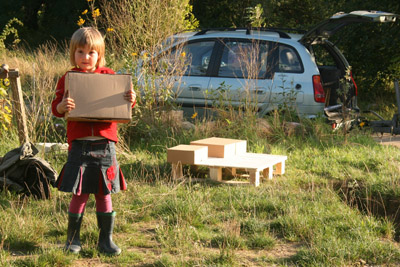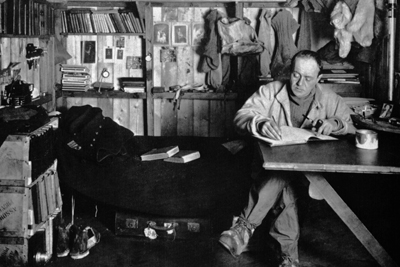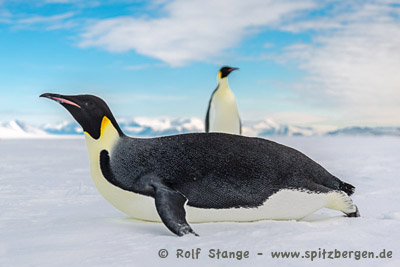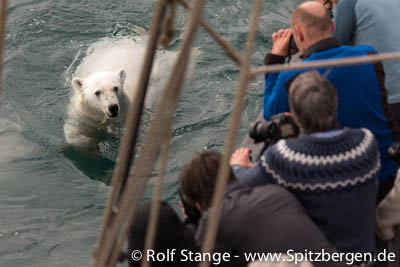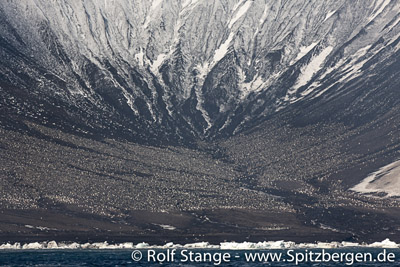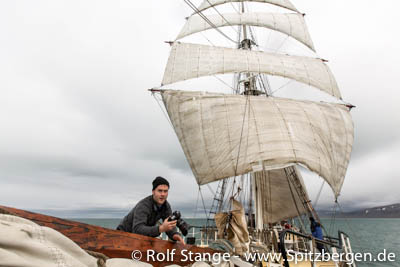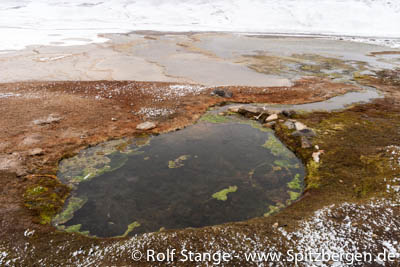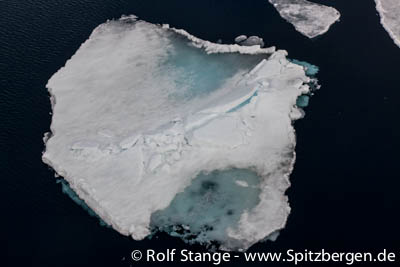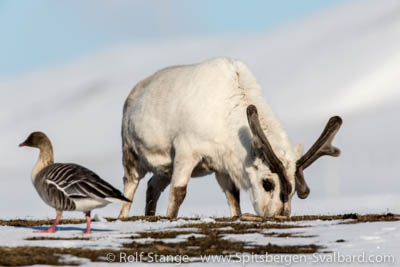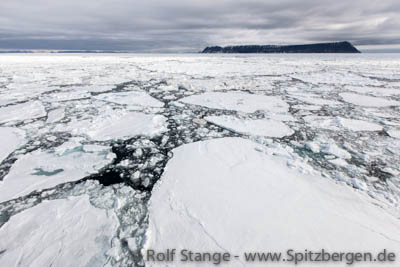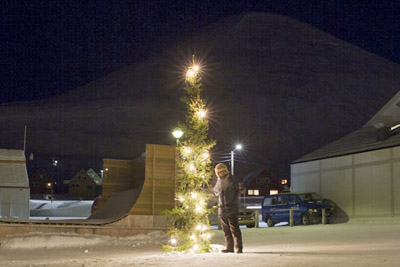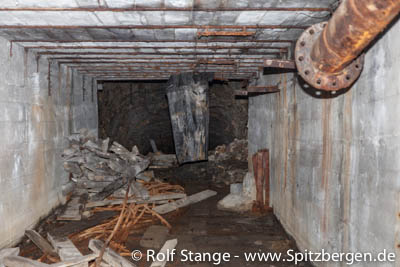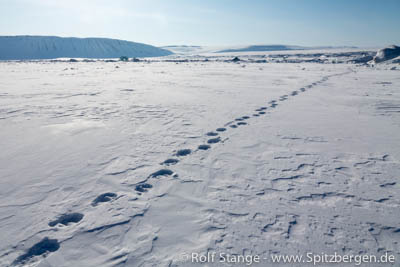-
current
recommendations- Liefdefjord
New page dedicated to one of Spitsbergen's most beautiful fjords. Background information and many photos.
- New Spitsbergen guidebook
The new edition of my Spitsbergen guidebook is out and available now!
- Liefdefjord
New page dedicated to one of Spitsbergen's most beautiful fjords. Background information and many photos.
Page Structure
-
Spitsbergen-News
- Select Month
- May 2025
- April 2025
- March 2025
- February 2025
- January 2025
- December 2024
- November 2024
- October 2024
- September 2024
- August 2024
- July 2024
- June 2024
- May 2024
- April 2024
- March 2024
- February 2024
- January 2024
- December 2023
- November 2023
- October 2023
- September 2023
- August 2023
- July 2023
- June 2023
- May 2023
- April 2023
- March 2023
- February 2023
- January 2023
- December 2022
- November 2022
- October 2022
- September 2022
- August 2022
- July 2022
- June 2022
- May 2022
- April 2022
- March 2022
- February 2022
- January 2022
- December 2021
- November 2021
- October 2021
- September 2021
- August 2021
- July 2021
- June 2021
- May 2021
- April 2021
- March 2021
- February 2021
- January 2021
- December 2020
- November 2020
- October 2020
- September 2020
- August 2020
- July 2020
- June 2020
- May 2020
- April 2020
- March 2020
- February 2020
- January 2020
- December 2019
- November 2019
- October 2019
- September 2019
- August 2019
- July 2019
- June 2019
- May 2019
- April 2019
- March 2019
- February 2019
- January 2019
- December 2018
- November 2018
- October 2018
- September 2018
- August 2018
- July 2018
- June 2018
- May 2018
- April 2018
- March 2018
- February 2018
- January 2018
- December 2017
- November 2017
- October 2017
- September 2017
- August 2017
- July 2017
- June 2017
- May 2017
- April 2017
- March 2017
- February 2017
- January 2017
- December 2016
- November 2016
- October 2016
- September 2016
- August 2016
- July 2016
- June 2016
- May 2016
- April 2016
- March 2016
- February 2016
- January 2016
- December 2015
- November 2015
- October 2015
- September 2015
- August 2015
- July 2015
- June 2015
- May 2015
- April 2015
- March 2015
- February 2015
- January 2015
- December 2014
- November 2014
- October 2014
- September 2014
- August 2014
- July 2014
- June 2014
- May 2014
- April 2014
- March 2014
- February 2014
- January 2014
- December 2013
- November 2013
- October 2013
- September 2013
- August 2013
- July 2013
- June 2013
- May 2013
- April 2013
- March 2013
- February 2013
- January 2013
- December 2012
- November 2012
- October 2012
- September 2012
- August 2012
- July 2012
- June 2012
- May 2012
- April 2012
- March 2012
- February 2012
- January 2012
- December 2011
- November 2011
- October 2011
- September 2011
- August 2011
- May 2011
- April 2011
- March 2011
- February 2011
- January 2011
- December 2010
- November 2010
- September 2010
- August 2010
- July 2010
- June 2010
- May 2010
- April 2010
- March 2010
- February 2010
- November 2009
- October 2009
- August 2009
- July 2009
- June 2009
- May 2009
- April 2009
- March 2009
- February 2009
- January 2009
- December 2008
- November 2008
- October 2008
- August 2008
- July 2008
- June 2008
- May 2008
- April 2008
- March 2008
- February 2008
- April 2000
- Select Month
-
weather information
-
Newsletter

| Guidebook: Spitsbergen-Svalbard |
Home → December, 2013
Monthly Archives: December 2013 − News & Stories
Spitsbergen-Svalbard.com 2013, 2014: look back and ahead
Most of us have sensed it by now: the year 2013 is almost over. Also for me, for us, for Spitsbergen-Svalbard.com, a lot has happened in 2013 and a lot will happen in 2013. What? Have a look at these 4 posts.
One of many highlights in 2013: the polar bear family in Tempelfjord, early May.
Thank you and happy new year!
It is still me, Rolf Stange, who is behind this website, writing the books, leading the polar voyages told about on this site and taking the photos. But none of this would be possible with all these polar enthusiasts who are part of all this. I can not mention everybody here who has been part of one of the trips, who is helping to make the website happen or to get the books on paper and out into the world etc, and some don’t necessarily want to read their name on the internet. By the way, the internet … how did Roald Amundsen organize his polar expeditions without it?
Even the youngest ones are keen to get involved when it comes to my books 😉
And last but not least: everybody who was on board in the far north or deep south, at good humour in any kind of weather. Thank you for being part of it! Without you, we wouldn’t be able to travel the Arctic or Antarctic, and it wouldn’t be half of the fun. Let’s go again – and all the best to you for the new year, anywhere between the poles!
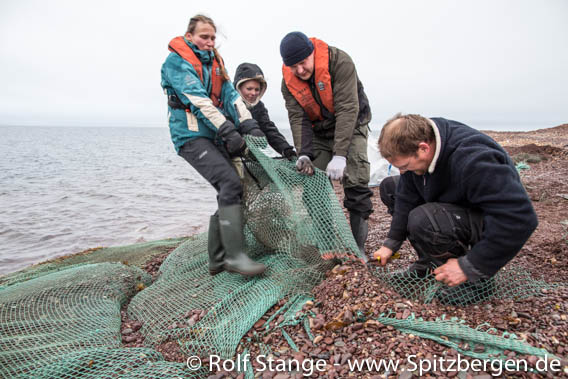
Some of the crew of Antigua, removing a big fishing net that had drifted on to a remote beach in Woodfjord. After a long day’s work, this wouldn’t happen without quite some enthusiasm for the arctic environment. Great! On the left, there is Michelle van Dijk, seasoned Spitsbergen traveller and owner of the campsite in Longyearbyen. On the right, Joachim, well known to many of you as Captain of the Antigua. Thank you!
Heimir from Iceland, Captain of Ópal, and his crew made the Greenland trips in September unforgettable for us. Great – thank you! We are looking forward to 2015!
2013, 2014: Spitsbergen-Svalbard.com’s look back – the publishing business
The publishing house Spitsbergen-Svalbard.com has been busy in 2013 as much as all the traveling allowed. The fourth revised German edition of the guidebook Spitsbergen-Svalbard is out. Since the first edition came out in 2007, both the German and the English versions have been updated about every second year, that makes one new version each year. In other words, this is quite a long-term project which is binding quite a lot of resources on a regular basis.
In 2013, the fourth revised version of the guidebook Spitzbergen-Svalbard was published.
Lately this year, our new Spitsbergen calendar for 2014 came out. It won’t be the last one. But maybe, the next polar calendar, for 2015, will be an antarctic one? Let’s see. What do you think?
Der Spitzbergen-Kalender für 2014.
New book projects are on their way, but considering all the other projects and trips of 2013, there wasn’t enough time to get something finished this year and not in the very near future. But things are on their way. More about it when we are getting there.
This famous photo taken by Herbert Ponting shows Robert F. Scott in the hut at Cape Evans in the Ross Sea, being busy writing something not too long before he started the voyage to the south pole, which was to be his last one. Regarding the writing, I hope I find time for it in 2014.
2013, 2014: Spitsbergen-Svalbard.com’s look back – photography and the internet
2013 has been a very successful year regarding polar photography. From all those trips to the Arctic and Antarctic, I have brought a wealth of good material back home. Some of it is already published as part of the triplog, photo gallery and slideshow that come with most trips, a few ones are part of the Spitsbergen calendar 2014, and more will be seen in future books and calendars.
The 360 degree navigable panorama images are relatively new territory in photo technique. The collection of polar panoramas on this website is already the largest of its kind on the world wide web, and it has images of places that have never before been photographed this way! There is still unpublished material waiting to go out, as the processing is quite time consuming, and there is definitely still far more work to be done in 2014 and beyond.
It does not matter where I travel in the Arctic or Antarctic: the camera is never far away. In this case, it is inside an old barrel.
The results can be seen on Spitsbergen-Svalbard.com. Also beyond the new panorama collection, quite a lot has happened there. The Spitsbergen-Svalbard.com news section has got more than one post per week in 2013, making stories and news from the Arctic accessible in one site in a language that most people can read. In the future, we will increase the frequency of posting and include news from other parts of the Arctic and the Antarctic. By the way, the German part of this website (Spitzbergen.de) was the first polar news blog within the German speaking internet.
Many parts of the website have been updated regarding both contents and advanced technology. As an example, the regional descriptions of Svalbard are now getting photo galleries to illustrate the individual parts of the Spitsbergen archipelago. This is an ongoing process. For example, Bear Island (Bjørnøya), Edgeøya and Barentsøya have already got their galleries, more will follow.
Quite importantly, the English section of this website has got its own domain since early 2013, which is obviously spitsbergen-svalbard.com. Well, you know this, otherwise you wouldn’t be reading this. But please don’t forget to update any links. And I am grateful for links anyway! All relevant contents – and pretty much everything is relevant in one or the other way – is published in both English and German.
And finally, Spitsbergen-Svalbard.com has got its own Facebook site since summer 2013, where all posts are made in both English and German. While I am traveling, there are regular stories and photos from the field. These are of course also accessible without being on Facebook, you don’t need to log on to read the stuff posted there.
2013, 2014: Spitsbergen-Svalbard.com’s look back – polar voyages
The core of my polar activities in 2013 has been the direct, unfiltered experience of the Arctic and Antarctic. This has always been and will always be the most important part for me, of my life. And regarding this, 2013 has definitely been a very successful year. Some highlights:
The semi-circumnavigation of Antarctica, including a visit to the Ross Sea, was without any doubt a highlight and something every polar enthusiast will have on his or her wishlist. I am glad that I could be part of it in February 2013. The next voyages of this kind are scheduled for early 2015, and I am already looking forward to it!
One of many unforgettable polar impressions in 2013: Emperor penguins in the Ross Sea, early February.
Several months in Spitsbergen in winter and spring 2013 were definitely a highlight beyond the perspective of 2013. Just have a look at the photo galleries!
On the way to the east coast of Spitsbergen, April 2013.
This was followed by several voyages in the arctic on board SV Antigua. Always a highlight, that is fore sure. And this summer was certainly no disappointment. We started in Norway, went to Bear Island and then around Spitsbergen several times. Intense arctic experiences of all kinds, beautiful impressions. This kind of arctic voyage will certainly continue to be a focus for me.
This curious polar bear kept swimming around Antigua for quite a while. Unforgettable for all of us who were there!
Then followed two trips in Scoresbysund in east Greenland on SV Ópal from Iceland in September. Just great. Beautiful, big Greenland. Good boat, good people. I am looking forward to more of this in 2015.
With SV Ópal in Scoresbysund, east Greenland. Again: Auch hier: Unforgettable for all of us who were there!
In November I had the opportunity to visit the South Sandwich Islands. Rarely visited, and new land for me. Exciting stuff! This was part of a voyage that went to some of the great places on Earth: the Falkland Islands, South Georgia and the Antarctic Peninsula.
Saunders Island, South Sandwich Islands. And once more: Unforgettable for all of us who were there!
I will continue travelling in polar areas as long as I can, by all means. For sure. I’ll be in Spitsbergen several times next year: soon in the polar night, then during the spring season which is ideal for any kind of winter traveling, and of course during the summer sailing season. I’ll travel on sailing ships of tall ship size (Antigua) and smaller (Arctica II, a true arctic yacht). In July, I’ll spend about a week on Jan Mayen. And I’ll be back to Greenland in 2015 at the latest. 2014 will be too short. As every year.
Course for the Arctic in 2014!
Geothermal energy in Longyearbyen?
The question for Longyearbyen’s future energy supply still needs to be answered. The local coal power plant is now getting old, and the local CO2 emissions per person are currently amongst the highest in the world, emitting about 65,000 tons of CO2 per year – for just above 2,000 inhabitants.
Now Malte Jochmann, senior geologist of the Norwegian mining company Store Norske, has brought geothermal energy into the discussion. Svalbard is permafrost area, but below the permafrost, the geothermal gradient is steeper than in Norway. The reason is possible the shorter distance to the middle atlantic ridge.
Warm springs are known from the Bockfjord-area on the north coast of Spitsbergen, but the warm springs there are small compared to those for example in Iceland. Bockfjord is too far from the settlements to use that area technically (and it is a National Park). But there is the possibility that a geothermal heat reservoir exists also in central Spitsbergen, where Longyearbyen is, at depths that may be usable. Especially if carbonate layers are found where hot waters tend to circulate in karst caves. The potential of geothermal heat won’t compare to Iceland, but it is not about building aluminium plants, but to supply a place as small as Longyeabyen with just above 2,000 people with warmth and possibly electricity.
The existence of suitable rocks and heat reservoirs in reachable depths is still to be proven, and scientifically, economically and politically it is still a long way to go until geothermal heat may or may not be used in Longyearbyen.
Warm spring in Bockfjord: Trollkjeldane (“troll springs”). These springs are 8 km inland and larger than Jotunkjeldane, which are close to the coast of Bockfjord.
Source: Teknisk Ukeblad
Arctic sea ice: 2013 more than 2012, but long-term negative trend unbroken
The area of arctic sea ice has been monitored by satellite for 34 years not, but the European satellite Cryosat, operative for 3 years now, is able to measure not only area, but also the thickness of the ice, giving scientists much more precise and reliable data to monitor the development of arctic sea ice. Before Cryosat, data about ice thickness had to be collected manually, giving only control samples with great effort.
2012 remains so far the minimum year for arctic sea ice, both in terms of area and volume. In October 2012, there were about 6,000 cubic kilometres (km3) of sea ice in the Arctic, compared to 9,000 at the same time in 2013. This means an increase of 50 %. Most of the increase is due to an increased thickness of multi-year ice, which is currently mostly two year ice, by 20 % or 30 cm. The proportion of multi year ice is, however, still significantly lower than it used to be.
The interpretation of these data is that 2012 was an extreme negative year, due to persistent strong winds that pushed a lot of sea ice out of the Arctic Ocean and into the North Atlantic, where it melted quickly. There is no indication of a change of the long-term negative trend, and the Arctic is still expected to be ice-free in summer within a few decades – some predictions even talk about a few years only.
In comparison, the sea ice volume of the early 1980s is estimated near 20,000 km3, more than double compared to the present value.
Sea ice in the Arctic: more than 2012, but much less than 30 years ago.
Source: ESA
Zodiac accident in Fjortende Julibukta: no juridical consequences
When a zodiac flipped in Fjortende Julibukta (Krossfjord) on June 17 this year, all 13 persons on board fell into the water. They reached the shore soon, but one American woman in her sixties lost consciousness and died, before the rescue helicopter arrived on the scene (see Spitsbergen-Svalbard.com-news from June 2013). The zodiac was one out of nine that belonged to the Sea Spirit, which is operated by the US-American company Quark Expeditions.
A video that was published on youtube includes footage taken shortly after the accident. The weather was appearently calm. This supports the assumption that the wave that turned the zodiac over originated from a calving from the glacier in the bay. The claim that the wave that caused the accident was unforeseen and unexpected seems doubtful when seen in this light. The danger of such waves, which often break violently on the shore and in shallow waters with some delay after the actual calving, is generally well known. Without further detailed knowledge of the incident, it would, however, be pure speculation to infer a lack of experience or any responsibility on behalf of the zodiac driver.
The accident was investigated by the Norwegian prosecutor in Tromsø with regards to juridical relevant behaviour on behalf of ship operator, captain, tour operator and driver. The Sysselmannen has now closed the case, as relevant behaviour was not identified. It is unknown if the family of the woman intends to take further steps.
The Sea Spirit in Hornsund, a few weeks after the accident in Fjortende Julibukta.
Source: Svalbardposten (49/2013)
Reindeer can see within the spectrum of UV-radiation
News from the world of the reindeer, who are currently facing hard times in the Arctic with the prevailing polar night. The toughest times will, however, come in spring, when the light returns. By then, fat reserves are mostly used up, but snow and ice still make access to food difficult for quite some time.
To survive under such extreme conditions, reindeer have developed a number of astonishing adaptations. These include the ability to see within the UV-spectrum of light. We humans can see from 400 nm to 700 nm: this is the spectrum of (for us) visible light, the rainbow colours. We cannot see anything beyond, neither wavelenghtes below 400 nm (ultraviolet=UV radiation and shorter) or above 700 nm (infrared radiation and beyond). Quite opposite, UV radiation can be harmful to our eyes and skin (snow blindness and sunburn).
Reindeer can, however, see wavelenghtes down to 320 nm, which is well beyond our own range. It is, however, unknown what exactly they see: colours or greyscale.
This ability may help reindeer to find food: important tundra plants absorb parts of the UV spectrum and may accordingly be more contrast-rich and thus easier to see within the UV spectrum. Being able to see UV may also make orientation easier in whiteout conditions, when visibility for humans is reduced to almost (or actually) zero. It is not dark, but any contrast gets completely lost in true whiteout, so we are then unable to detect or identify objects, distances, terrain features etc. Also predators are easier to detect in advance within the UV spectrum.
With their UV sensing abilities, reindeer are no exception in the animal world. Similar seeing ranges have been found in birds, bats, rodents and insects. It is quite possible that we as humans with our limited seeing ability are the expection rather than the reindeer.
In another article, forskning.no reports about the evolution of reindeer: the genetic diversity of reeindeer has developed largely during the ice ages. Splitting of areas due to inland ice formation in North America has led to genetic splitting and accordingly an increased gene pool especially for tundra reindeer. Those reindeer living in woodlands may in contrast have experienced a reduction of their genetic diversity during ice sheet growth, when their habitat was reduced in area and populations moved together. Especially tundra reindeer may accordingly be quite well suited to adapt to climate and habitat changes. In the past, they have shown an amazing ability to survive a changing environment: they are amongst few species of Quaternary (ice age) megafauna that has survived until modern times, while mammoth, smilodon, megaloceros and many others have disappeared from the planet.
Survival experts in harsh climate: Reindeer in Spitsbergen.
Source: Forkning.no (UV-visibility, genetic variation)
17 companies searching for oil in new area in the eastern Barents Sea
The exact position of the border between Russia and Norway in the Barents Sea has been determined in a treaty between the two countries as late as in 2010. Norway has recently opened a new area, as large as Switzerland, for exploration. On Tuesday, no less than 17 international companies have announced that they want to engage in exploration in the new area in 2014. These are BP, Chevron, ConocoPhillips , Eni, Royal Dutch Shell, Lukoil, Idemitsu, Repsol, Det norske, Wintershall, Suncor, VNG, PGNiG , Spike, Statoil, GDF Suez and Lundin Petroleum.
The U.S. Geological Survey estimates the potential near 90 million barrel. Exploration is scheduled to start in April 2014. The Norwegian oil ministry has already carried out some first exploration work.
It is safe to assume that environmental aspects will not keep the Norwegian authorities from giving out licenses for exploration, which includes seismic surveys with explosives, and for exploitation. (side note: it is easier to close some more areas for tourists and then pretend you have done something for the environment there).
Drift ice in the Barents Sea.
Source: Financial Post
Norway’s worst christmas tree stands in Longyearbyen
The christmas tree that has recently been set up in Longyearbyen has been called the worst one in Norway by several major media of the country (Nordlys, TV2). The local newspaper Svalbardposten has devoted two full pages to the tree and asked passers-by about their opinion. These were mixed, including comments like “a bit funny”, “a bit thin”, “aerodynamic” and “thin branch”, which speak a clear language.
Longyearbyen’s christmas tree is traditionally donated by Tromsø community, who has sent the tree up as flight cargo this year. According to media, the carrier had requested the tree not to be too volumous. After photos had started to circulate in media, it was quickly decided in Tromsø to send a new tree – this time by ship, so the new tree will certainly be more handsome and is expected to satisfy critics in Longyearbyen and elsewhere. Well, then – merry christmas!
“Norway’s worst christmas tree” (image: Christian Nicolai Bjørke / Svalbardposten).
Fine after series of mining accidents in Barentsburg
After three serious accidents in the Russian coal mines in Barentsburg within just a few months, the Norwegian authorities have reacted by giving the mining company Trust Arcticugol a fine of 1.3 million Norwegian Kroner (ca. 154,000 Euro) on the basis of the Norwegian labour protection law (arbeidsmiljøloven).
Two out of the three accidents led to loss of human life: A Ukrainian worker died on April 04 after he had been hit by falling stones in a mine 500 m below sea level. On June 20, another Ukrainian was hit by a stonefall in a ventilation shaft at depths of 300 meters. The third accident happened on September 10, when a third Ukrainian miner got his legs jammed in the production area of the mine. He lost one of his legs.
Dangerous terrain: mine entrance in Barentsburg.
Source: Sysselmannen
Polar bears in the polar night
Several polar bear observations close to Longyearbyen were reported within just a few weeks. Not all observations could be confirmed, but some are beyond any doubt, such as the fresh tracks seen yesterday in Adventdalen close to Longyearbyen. The Sysselmannen reminds all who are moving around in the field to to so with care, being alert and carrying adequate weapons.
Other than that, it is pretty calm these days in and around Spitsbergen.
Polar bear tracks: quite impressive during daylight. Even more so in darkness!
News-Listing live generated at 2025/May/02 at 21:51:33 Uhr (GMT+1)

